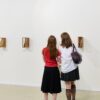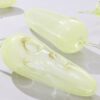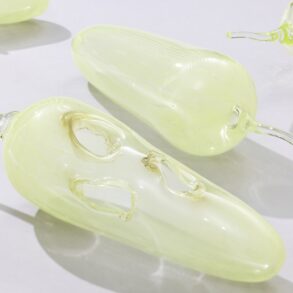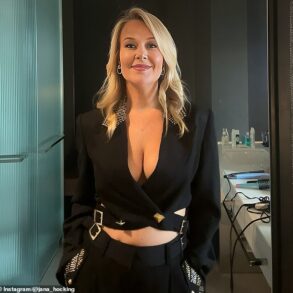NEW YORK — When Paula Modersohn-Becker left her husband and stepdaughter to move to Paris in the spring of 1906, she was ablaze with ambition. Unbeknownst to her, she was also nearing the end of what curator Jill Lloyd calls a “ten-year odyssey to become herself.”
I’ve been thinking about what that phrase — “to become oneself” — means, and what it may have meant to this fascinating artist, since seeing “Paula Modersohn-Becker: Ich Bin Ich/I Am Me,” a revelatory show at the Neue Galerie.
Modersohn-Becker (1876-1907) was as prolific as Van Gogh. She created 734 paintings and just under 1,400 works on paper, all in less than a decade. But she is barely known in this country. This show is her first U.S. retrospective.
In Germany, she is a star — an artist of such importance that she is the first woman to have her own dedicated museum, in Bremen, Germany. She helped lead the way into expressionism, Germany’s great contribution to modernist art. And she is credited with painting the first nude self-portrait by a woman.
The latter is a huge and somewhat contentious claim. She is not, in the painting in question, entirely nude (she is covered from the waist down) nor was she the first woman to paint her own bare chest. But the painting, titled “Self-Portrait on Sixth Wedding (Anniversary) Day,” is so richly conceived and fully embodied that it does feel somehow unprecedented.
One gets the feeling, as Lloyd writes in the show’s catalogue, that during those warm months in Paris, “one door after another opened in Modersohn-Becker’s creative world.” She painted a series of tautly distilled, heavily sculptural nudes of women and children. Sometimes these women, whose expressions she often effaced as if to give more weight to their bodies, held oranges or other fertility symbols. She showed mothers breastfeeding infants. She painted powerful still lifes with pulpy pumpkins, crusty baguettes and glossy earthenware jugs in a simplified style. And she painted a series of self-portraits.
“I am becoming somebody,” she wrote. “I’m living the most intensely happy period of my life.”
When her husband began calling her back from Paris, she rejected his entreaties. “Try to get used to the possibility … that our lives can go separate ways,” she wrote. And less gently: “Let me go, Otto. I do not want you as my husband. I do not want it.”
But in the fall, running short of money, she chose to return to Worpswede — the German town she had moved to eight years earlier — and to her husband. Soon after that, she became pregnant.
During her period of independence, Modersohn-Becker had painted “Self-Portrait on Sixth Wedding (Anniversary) Day.” She showed herself against a pale green background with a pattern of darker green dots. She looks out at the viewer, her head tilted, her large eyes tender and frank. Naked to the waist, she wears a chunky amber necklace hanging down between her breasts. One forearm rests on the shelf of an exposed pregnant belly.
Eighteen months after she painted this work, Modersohn-Becker died of a postpartum embolism. After years of ambivalence, she had become intensely excited about becoming a mother. Her dying words, just over two weeks after giving birth to a daughter, were: “What a pity.”
Since Modersohn-Becker wasn’t yet pregnant when she painted “Self-Portrait on Sixth Wedding (Anniversary) Day,” the work is wide open to interpretation. To me, it suggests a woman engrossed by her own body’s potential to create new life, and at the same time imagining how such a transformation might affect her ongoing process of self-discovery. I think she was expressing her hope that the two kinds of creativity — biological and artistic — would prove compatible.
Undoubtedly, the painting constitutes a decisive event in Modersohn-Becker’s arduous and ecstatic struggle to become herself.
But what does it mean to “become” or “discover” oneself? Aren’t we all already what we are? What might constitute a more “authentic” self than the one we were yesterday, or five years ago? What is this “self-actualization” nonsense so many people go on about?
Modern art can feel so urgently relevant because it attempted to answer such questions at a time when they seemed up for grabs as never before. Modernist art, after all, was a response to an emergency, one we are still living through.
In the late 19th and early 20th centuries, society was convulsed by transformations in the economy, science and technology. New fields of knowledge transformed people’s understanding of the world. Many of these involved digging: into the past, into the earth, into the recesses of the mind. Received wisdom about what the world was made from, how the mind worked, the origins of religion and the evolution of art was changing at warp speed. Individuals were subjected to unfamiliar kinds of pressure as power was exerted from new, often invisible directions.
How to be authentic in such a context was the problem many artists were trying to solve. Modersohn-Becker inherited the same general situation as other early modernists. But the question of authenticity had specific resonances for creative women.
Although women were gaining greater rights and freedoms, society still tended to see female authenticity in terms of extraneous relationships (motherhood, wifedom) rather than inherent qualities, like intelligence, courage or creativity.
When Modersohn-Becker joined a small artists’ colony in Worpswede, in the north of Germany, in 1898, her companions included the sculptor Clara Westhoff, the poet Rainer Maria Rilke (who would marry Westhoff) and the painter Otto Modersohn (whom Paula would marry).
Otto had been married before and had a young daughter. After his wife died, he proposed to Paula, who immediately took on the dual role of wife and mother. Still, she kept a studio of her own and was at pains to reassure her own mother: “Just because I’m getting married is no reason for my turning into a nothing.”
The phrase is stark: “turning into a nothing.” For a woman, the risk was — and perhaps still is — that marriage and motherhood would erase her authentic self. Clearly, some women discover purpose and meaning through motherhood. But others hunger for more. Modersohn-Becker wavered between the two, but she seems to have settled on wanting both.
She was certainly curious about the roles motherhood and art would both play in her struggle to become more fully herself. “This constant rush towards the goal is the most beautiful thing in life,” she wrote. “Nothing else comes close to it.”
Drawing is rightly considered the most authentic — because it is direct and immediate — artistic medium. So it’s fitting that some of Modersohn-Becker’s most powerful works are her charcoal drawings. They have been underappreciated until very recently, as co-curator Jay A. Clarke points out in the catalogue, so their inclusion here is momentous.
Modersohn-Becker began drawing at 16 while visiting an aunt in London, and she continued her training back in Germany. Influenced by the linear outlines and realistic detail of Northern Renaissance artists, she often favored profile portraits. But she also drew children with clarity, freshness and real command, often on a very large scale.
In her portrait drawings she relished facial wrinkles, bony backs, sagging breasts, pinched lips, long noses and recessed chins. Her interest in “ugliness” — really, a focus on idiosyncrasy transformed by the quality of her attentiveness into beauty — disgusted the Nazis, who added Modersohn-Becker to their infamous list of “degenerate” artists.
Seeking what she called the “gentle vibration of things,” she was influenced by the German movement known as “Lebensreform,” or life reform, and by “Nacktkultur,” or nude culture. She loved to bathe nude in lakes and rivers, she danced naked under the moonlight and generally cultivated what Lloyd calls “a pantheistic, quasi-mystical celebration of nudity in nature.”
Modersohn-Becker frequently depicted the landscape around Worpswede. But instead of painting sweeping vistas, she found herself painting close-ups of birch trees. She repeatedly painted these “chaste and naked” birches — symbols of renewal and purity — and in her writings gave them human characteristics: the trees, she wrote, “prayed devoutly,” “mourned,” and “begged for happiness.”
Over time, she realized she needed fewer trees and more actual people in her life. And so, as her marriage began to unravel, she packed her bags and went to Paris. There, in the spring and summer of 1906 — the same year Matisse and Picasso were beginning to revolutionize modern art — Modersohn-Becker, too, enjoyed a period of ecstatic creativity.
It was more than just “a pity” that, by the end of 1907, this ecstasy would be over. It was a full-blown tragedy.
Paula Modersohn-Becker: Ich Bin Ich / I Am Me Through Sept. 9 at the Neue Galerie, New York. neuegalerie.org
This post was originally published on this site be sure to check out more of their content







